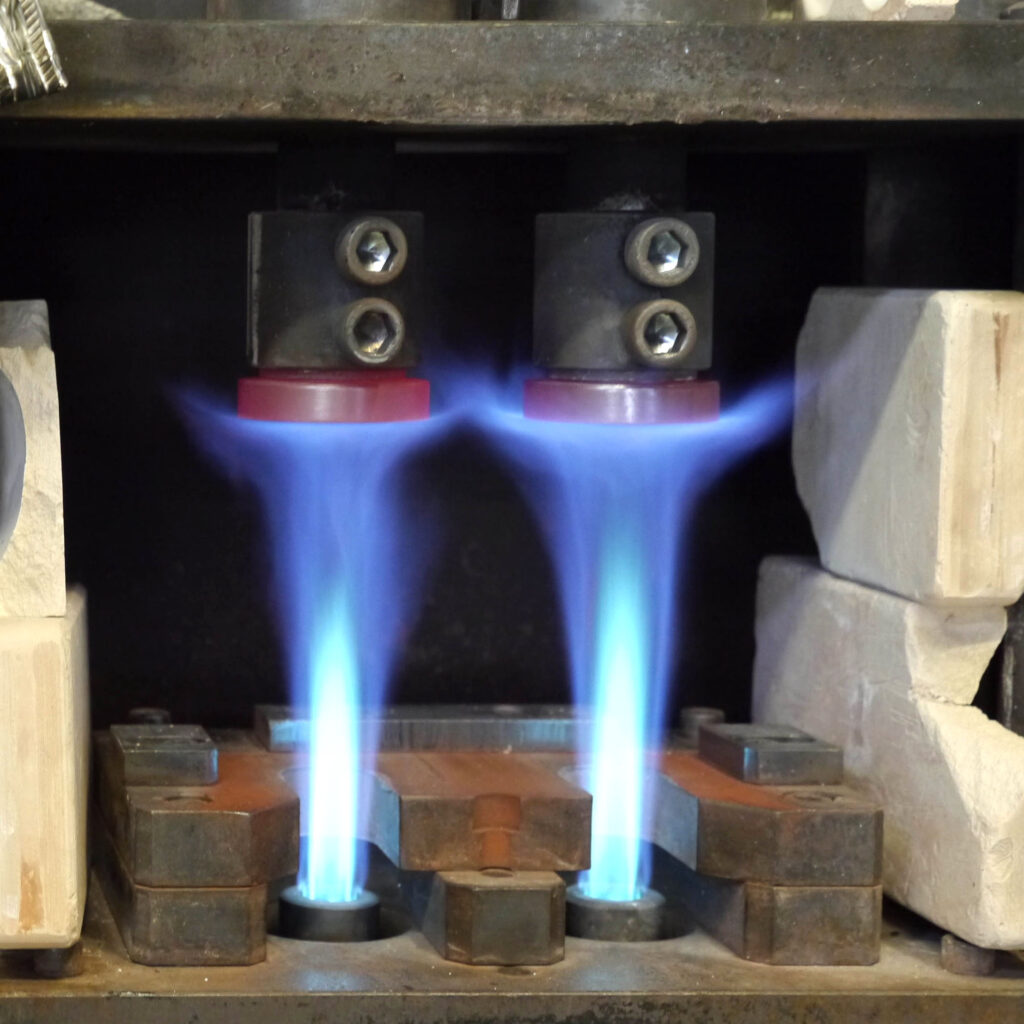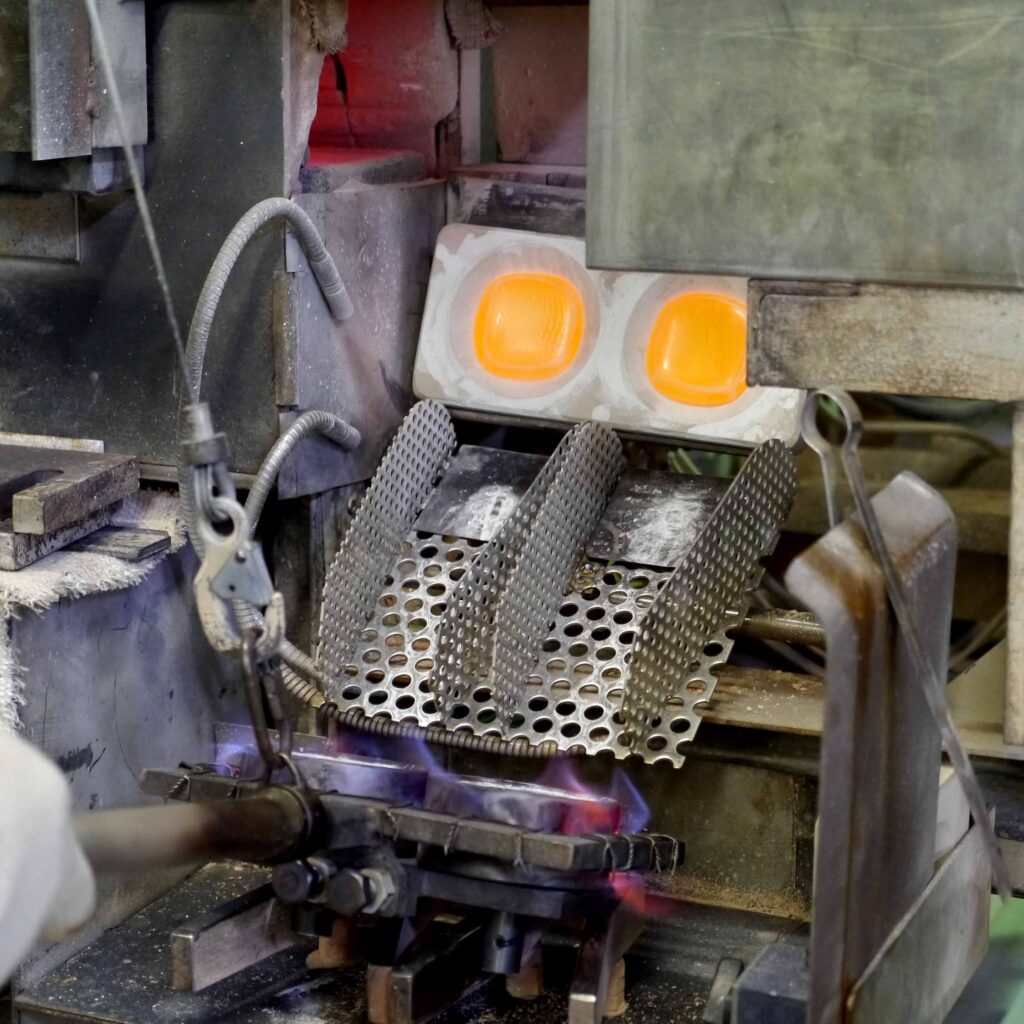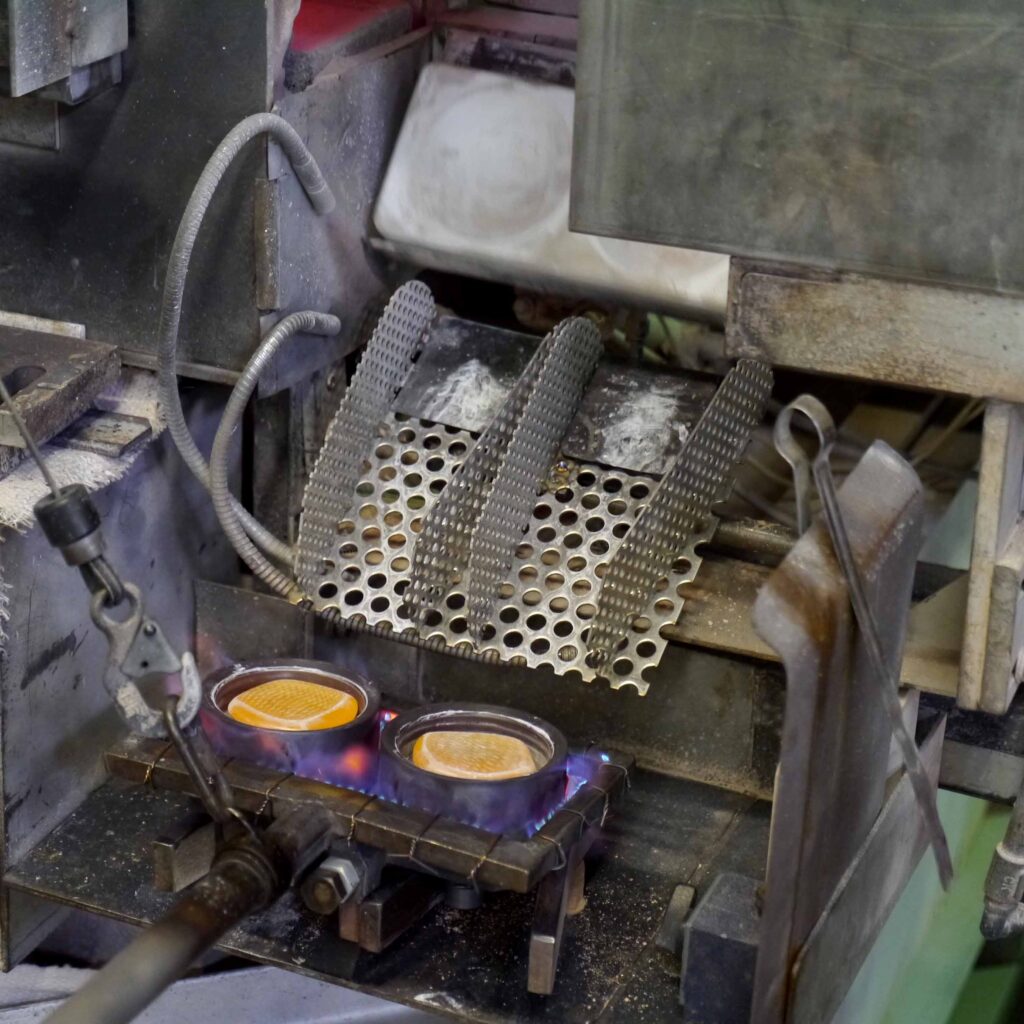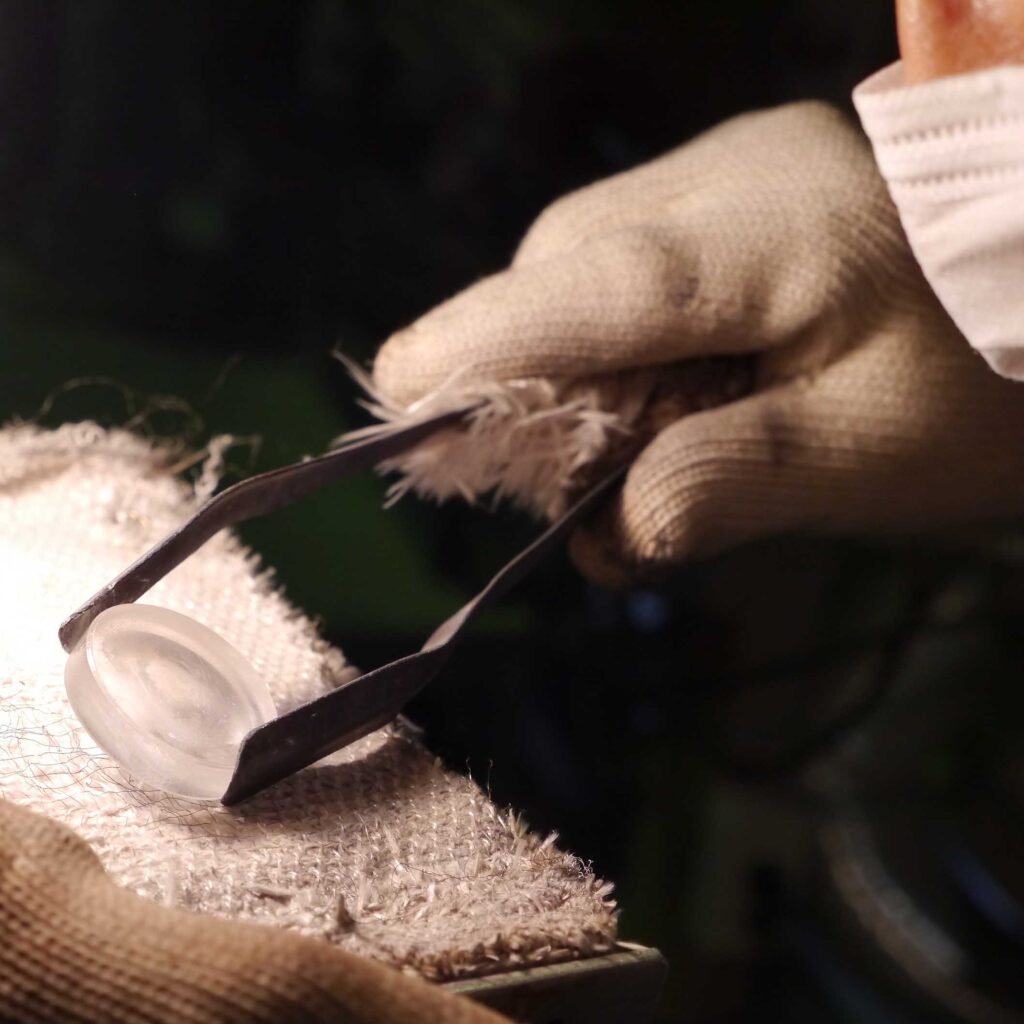Press-molding at 700ºC

This area in Obuse factory handles the hottest operations. It is where we press-mold lens blanks. The above photograph shows the equipment that presses the optical glass material that is heated in a large electric furnace to a viscosity that allows processing, into the shape of a lens element. To prevent the temperature of the optical glass from decreasing during pressing, burners continuously heating the press dies with flames. A high-accuracy spot thermometer monitors the surface temperature of the press die to rigorously maintain the necessary temperature. Depending on the types of glass material, the temperature ranges from 500ºC to 700ºC. Though large fans and professional-use spot air coolers are employed, you can feel the intense heat. This heat is specific to manufacturing sites that handle flames.


The process of collecting the pieces of glass in the press dies as they emerge from the electric furnace and putting them into the pressing machine requires skilled manual work. If pressed for too long of a time, the pressed glass may break when it returns to ordinary temperature. And, if the pressing time is too short, the finished shape is unstable. Knowing this delicate duration is a must for producing good products.
There are various types of optical glass. Each material has a suitable heating method and processing temperature. Even similar optical glass requires different methods and temperatures depending on finished sizes. So, even in this intense heat, the temperature is intricately controlled.

After being heated and pressed at a high temperature, the square optical glass material is finally a viable lens blank. Lens blanks have a beautiful texture and shape, and, to produce good lenses from them, it is necessary to make exceptional efforts. Even the slightest problem in temperature management or press working can cause cracking, bent edges, and devitrification, that is to say, the loss of transparency vital to optical glass. We produce the best lens blanks from various types of optical glass. Our passion permeates through each and every lens blank leads us to draw a line between mass-production and what we do.